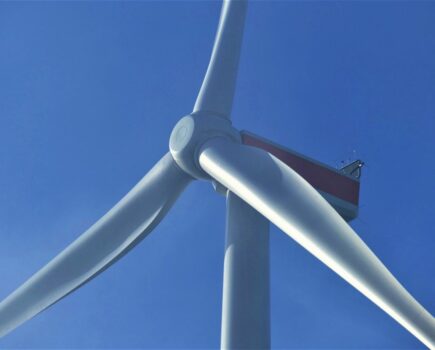Radical action needed to cope with choke species.
Above: The common dab (Limanda limanda) is native to shallow seas around Northern Europe.
Industry leaders north and south of the border are warning of a catastrophic situation if radical steps are not taken to address the choke species problem before the landing obligation is fully implemented in 2019, reports Tim Oliver.
The NFFO has warned of ‘economic chaos and social dislocation’ while the UK’s biggest PO, the SFO, speaks of ‘severe consequences’ and ‘potentially unprecedented’ difficulties (see below).
The NFFO made its comments as it was announced that the TAC on North Sea dab and flounder could be removed this year, making the species non-quota (see below). It welcomed the move, but said it was only a small first step in addressing the choke species problem and making the landing obligation workable.
Chief executive Barrie Deas told Fishing News: “We are sleepwalking into a crisis in 2019 in the mixed fisheries, when the landings obligation is extended to all regulated species.
“It is increasingly obvious to the member states concerned, as well as the advisory councils and the Commission, that the existing tool box provided in the legislation will be inadequate to mitigate against numerous and serious chokes that are expected to arise.
“The removal of the TAC for dab and flounder will be the first decisive step to avoid the economic chaos and social dislocation that will accompany multiple chokes and, therefore, premature fisheries closures. This first step is very welcome, but in itself it will not be nearly enough. Many more steps are required.”
He said fundamental work has still to be done to accommodate the landing obligation and to reconcile EU requirements that pull in different directions.
“This mess is a direct result of the way that the landing obligation was legislated for in the middle of a full-scale and wholly artificial moral panic in 2013. Thank you, Hugh (Fearnley-Whittingstall) and Maria (Damanaki).”
Examples of EU regulations pulling in opposite directions to the landing obligation are: the technical conservation regulation, the MSY timetable for all stocks, zero TACs, relative stability, and lack of flexible TACs within multi-annual management plans.
“The bottom line is that it is fundamentally unreasonable to oblige fishing vessels to meet requirements that pull in opposite directions,” said Barrie Deas.
He also pointed out that UK ministers have indicated that the principle of a discard ban would be retained after Brexit. Although there would be a chance to do things differently, “we would be deluding ourselves if we think that our ministers would abandon policies that they have publicly argued for while the UK was part of the EU. Solutions for chokes will therefore be required in the UK fisheries as well as the residual EU waters,” he said.
TAC on dab and flounder set to go?
The TAC on North Sea dab and flounder could be removed this year, making them non-quota species.
There is a possibility the Commission will propose the removal of the TAC this year, through a mid-year year amendment to the 2017 TACs and quotas regulation. “The proposal is under discussion and could go through in April,” said Barrie Deas. “But if it does not, it must now be highly likely that this TAC will not appear in the Commission’s proposal for TACs and quotas in 2018.”
The possible lifting of the TAC follows ICES advice to the European Commission that the risk of removing the TAC is low, and is valid as long as dab and flounder remain by-catch species in the main target fisheries of plaice and sole, and that the target species are fished sustainably.
The NFFO said that as as fishing mortality in the two target species was already low, the TAC on dab and flounder could be removed without breaking the CFP’s rules on setting TACs.
Barrie Deas said: “This is an important development and should be the start of a shift to removing TACs from other stocks where they serve no purpose, but clog up the advisory system and make implementing the landing obligation all but impossible.”
He said removing these kinds of TACs on secondary species should be an urgent priority as the landing obligation moves towards full implementation, and should have been done before the process began.
“The removal of the TAC for dab and flounder is of great significance, not just as a belated attempt by the EU to accommodate the landing obligation but as a part of a shift towards a workable discard ban and a generally more flexible and rational system of fisheries management. The critical question is whether all the necessary changes will be made in time.
Read more news from Fishing News here.








